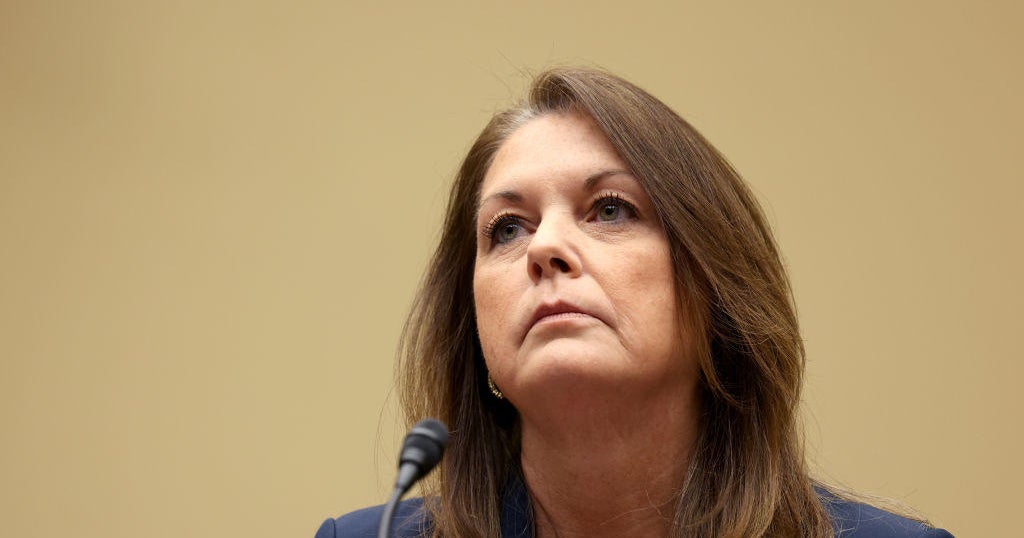CBS News
The Secret Service budget has swelled to more than $3 billion. Here’s where the money goes.

Secret Service Director Kimberly Cheatle on Monday faced blistering criticism as she directly addressed lawmakers’ questions for the first time about the attempted assassination of former President Donald Trump earlier this month. A key concern in wake of the shooting: How did a federal agency whose annual budget has swelled to $3 billion fail to stop an amateur assailant like Thomas Matthew Crooks?
While Cheatle didn’t provide an answer at the House Oversight and Accountability Committee hearing, the question points to the Secret Service’s funding and staffing, which as of the 2023 fiscal year has jumped 27% from about $2.34 billion in 2014 on an inflation-adjusted basis, according to an analysis of budget data from the Cato Institute, a libertarian-leaning think tank.
On Tuesday, Cheatle resigned from her position after facing pressure during the House Oversight hearing from both Republican and Democratic lawmakers to step down due to the agency’s failure to stop the assassination attempt.
Funding for the agency has increased over the last decade in part due to an incident in 2014, when a man scaled the White House fence and ran through its front doors. Although then-President Obama wasn’t in the building at the time, the incident caused a review of the Secret Service’s training and brought about calls for more funding.
Over the years, those demands have been answered, with lawmakers approving an additional $211 million in funding for the Secret Service in fiscal year 2023 alone, documents show.
Lack of funding doesn’t appear to be the problem that led to the assassination attempt, which appears to be linked to management stumbles, Chris Edwards, a fiscal studies expert at the libertarian-leaning Cato Institute, told CBS MoneyWatch.
“No amount of funding will fix the management failures,” he noted. Still, he added that he wouldn’t be surprised if the Secret Service ends up with more funding after the assassination attempt, given the agreement between lawmakers of both parties that the agency had failed in its mission.
“We’ve seen this type of problem before — when there is a management failure at an agency, they almost invariably end up with more funding,” he noted.
Here’s what to know about how the Secret Service spends its funding.
How much is the Secret Service’s budget?
The Secret Service’s annual budget was about $3 billion in the most recent fiscal year, which ended September 30, according to Edwards, who analyzed data from the Office of Management and Data.
About 87% of that budget, or $2.7 billion, is directed toward operations and support, which includes $1.2 billion in funding for Protective Operations — the division that oversees protection for the president, vice president and their families.
The remaining $400 million in annual spending is directed toward procurement, information technology, construction and research and development.
How many Secret Service agents protect the president?
The Protective Operations unit employed about 3,671 staffers in the most recent fiscal year, or about 44% of the Secret Service’s roughly 8,300 employees.
Of course, those agents are spread across multiple assignments, as the agency by law is tasked with more than protecting the president. In addition to the commander-in-chief, the unit must also safeguard the president’s family, the vice president and their family, as well as former presidents and vice presidents and their families, as well as presidential and vice presidential candidates.
Protective Operations is divided into several divisions:
- Protection of Persons and Facilities, which protects presidents, vice presidents and their families, with a budget of $907 million
- Protective Countermeasures, which is focused on protecting the president and vice president at the White House and vice president’s residence from “emerging explosive, chemical, biological, radiological and cyber threats.” It has a budget of $82.5 million.
- Protective Intelligence, which investigates people or groups that pose threats to the president and other protectees. It has a $94.6 million budget.
- Presidential Campaigns and National Special Security Events, which protects “major presidential and vice presidential candidates” and their spouses during the general election. It has a $73.3 million budget.
Others who qualify for Secret Service protection include foreign leaders who visit the U.S., such as Israeli Prime Minister Benjamin Netanyahu, who arrived in Washington on Monday.
During the Monday hearing, Cheatle defended the number of agents assigned to Trump’s rally, saying there were “sufficient resources” assigned to protect the former president.
What are critics saying about the Secret Service’s funding?
Edwards of the Cato Institute noted that the security failure in 2014 was blamed on underfunding. But as he wrote in a July 17 blog post, “If the administration uses that excuse this time, it would not be very convincing because the Secret Service budget has soared in recent years.”
Still, Edwards told CBS MoneyWatch that he questions whether the Secret Service’s mission is too broad, given that it also includes responsibility for investigating financial crimes, such as counterfeiting and identity theft. In his view, such oversight would be better assigned to the Treasury Department, allowing the Secret Service to focus on protecting the president and other officials.
Rep. James Comer, chairman of the House Oversight committee, has said after the assassination attempt that the Secret Service’s annual budget “is more than enough” to provide adequate protection.
“We want to know who’s at fault for what happened,” the Kentucky Republican said.
—With reporting by the Associated Press.
CBS News
12/20: CBS News Weekender – CBS News

Watch CBS News
Be the first to know
Get browser notifications for breaking news, live events, and exclusive reporting.
CBS News
A unique spin on the classic holiday eggnog

Watch CBS News
Be the first to know
Get browser notifications for breaking news, live events, and exclusive reporting.
CBS News
Drone expert unpacks mysterious sightings across Northeast

Watch CBS News
Be the first to know
Get browser notifications for breaking news, live events, and exclusive reporting.









